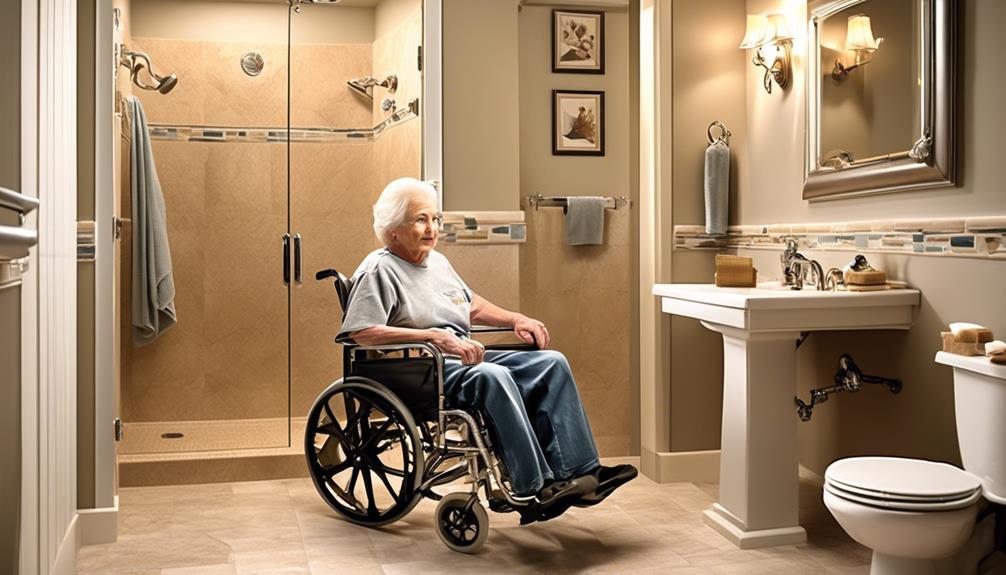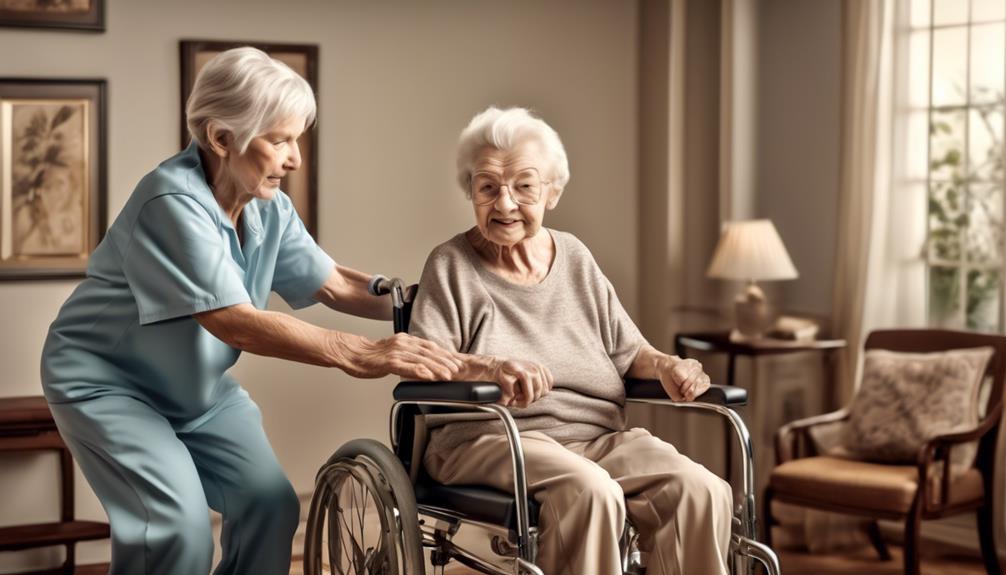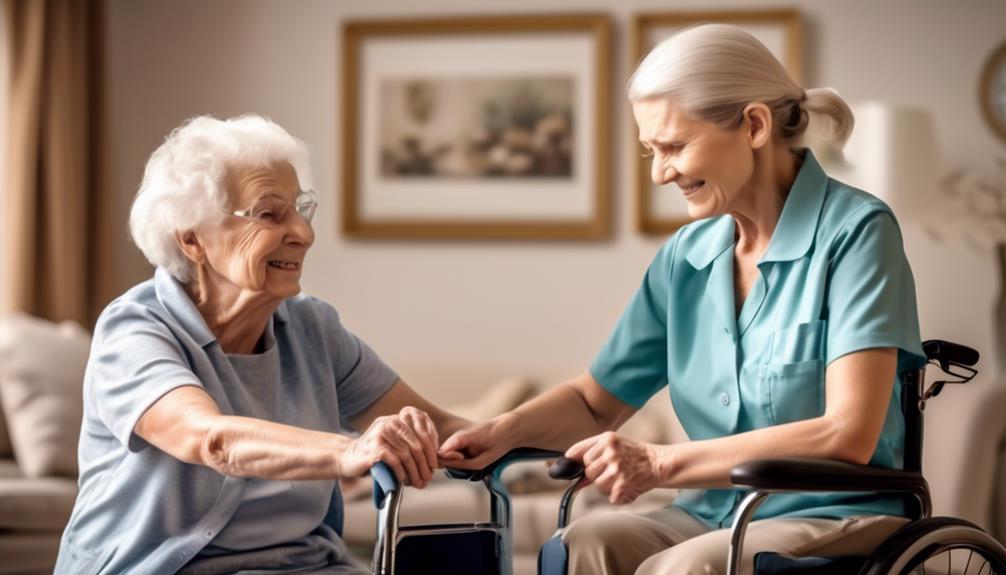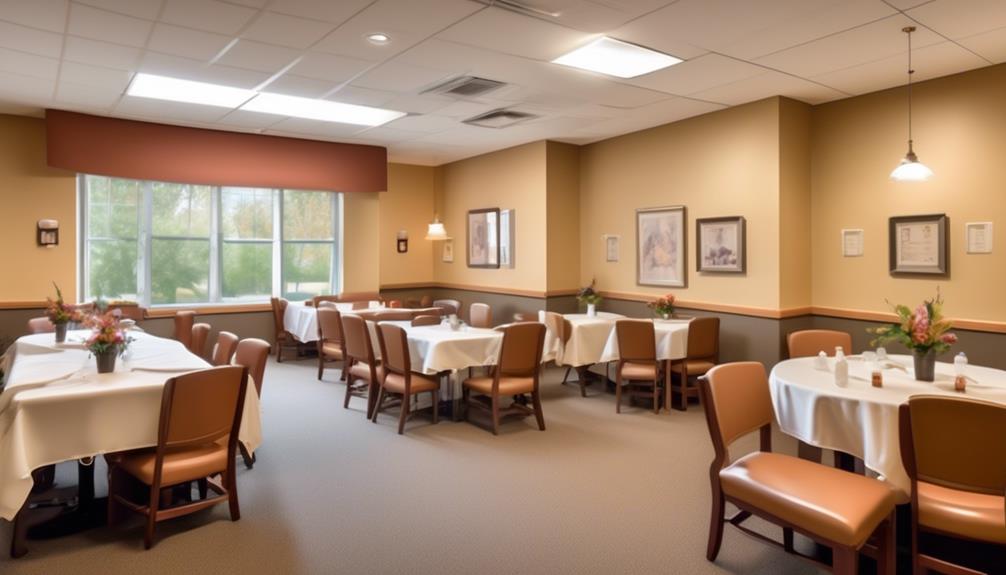Caring for a loved one at home can sometimes feel like trying to find your way through a complicated puzzle of physical obstacles. Ensuring proper lifting techniques are used and managing daily tasks can feel daunting.
But fear not, as we unravel practical tips to help caregivers maintain their well-being while providing safe and supportive care. Stay tuned for insights on creating a secure environment, managing caregiver challenges, and promoting overall health.
Key Takeaways
- Prioritize proper lifting techniques to prevent injuries
- Establish a safe and supportive caregiving environment
- Seek assistance to manage caregiver demands effectively
- Utilize support resources like caregiver-specific apps and respite care
Understanding Caregiver Responsibilities
In our role as caregivers, we take on the crucial responsibility of understanding and fulfilling the diverse needs of those under our care. This encompasses various aspects such as assisting with personal hygiene, managing medications, and supporting daily activities. Ensuring the well-being of our care recipients goes beyond physical tasks; we also provide emotional support, companionship, and advocacy for their needs. Managing complex medical requirements, liaising with healthcare providers, and coordinating appointments are all part of the caregiver responsibilities we undertake.
Balancing safety and quality care is paramount in our caregiving journey. By staying attuned to the individual needs of those in our care, we create a supportive and secure environment. Upholding safety measures while delivering compassionate and competent care is our top priority. Through effective communication and a proactive approach, we strive to address the diverse needs of our care recipients, ensuring they receive the highest standard of care possible.
Addressing Safety Concerns at Home

Ensuring the safety of seniors at home involves implementing essential modifications and practices to prevent accidents and promote a secure living environment. Caregivers play a crucial role in creating a safe space for seniors with physical challenges by addressing home safety concerns effectively. Below is a table outlining key safety modifications that can significantly enhance the safety and well-being of seniors receiving in-home care:
| Safety Modifications | Benefits |
|---|---|
| Grab bars and non-skid rugs | Prevent falls and injuries |
| Proper lighting and clear pathways | Enhance safety for seniors with mobility issues |
| Easy access to essential items | Promotes a secure environment |
| Handrails and raised toilet seats | Aid in maintaining independence and safety |
| Regular home safety assessments | Crucial for creating a safe and supportive environment |
Managing Physical Caregiver Challenges
Addressing the physical challenges faced by caregivers in providing in-home care involves a careful balance of quality assistance and personal safety considerations. When managing physical caregiver challenges, it's essential to prioritize the well-being of both the caregiver and the care recipient.
Here are key points to consider:
- Minimizing Risks: Implement proper lifting techniques and use assistive devices to prevent strain and injury while performing tasks such as lifting and turning.
- Creating a Safe Environment: Ensure the home environment is free of hazards and obstacles to facilitate safe movement and reduce the risk of accidents for both the caregiver and the care recipient.
- Balancing Caregiving Demands: Recognize the physical demands of caregiving, including tasks like reaching and assisting with mobility, and seek support to prevent burnout and promote overall well-being.
Promoting Well-being Through Support

Supporting caregivers in promoting well-being is crucial for ensuring the sustainability of in-home care and the overall health of both the caregiver and the care recipient. Caregiver support groups play a vital role in reducing feelings of isolation by providing valuable emotional support.
Connecting with healthcare professionals can offer guidance on effectively managing physical caregiver challenges, leading to improved well-being. Technology and caregiver-specific apps can streamline care tasks, making the caregiving process more manageable and enhancing overall support.
Seeking respite care services is essential to provide caregivers with the necessary breaks to prevent burnout and maintain their well-being. Accessing available resources such as home health agencies and community programs can offer additional support and assistance in navigating physical caregiver challenges.
Creating a Safe Home Environment
To enhance the safety and comfort of seniors at home, consider installing grab bars in the bathroom to reduce the risk of falls and provide added stability. Ensuring adequate lighting in hallways and staircases can improve visibility and prevent accidents. Securing loose rugs and using non-slip mats can enhance safety and prevent tripping hazards. Removing clutter and obstacles in walkways can create a clear path for seniors to move around safely. Implementing handrails on staircases and ramps can provide additional support for seniors with mobility challenges.
Creating a safe home environment is crucial for seniors with physical challenges. Careful attention to detail and proactive measures can significantly impact their well-being. By focusing on fall prevention and enhancing stability, caregivers can promote a sense of security and independence for seniors receiving in-home care. Each adjustment made to the home environment reflects a commitment to supporting seniors through their unique needs, ultimately fostering a safer and more comfortable living space.
Frequently Asked Questions
What Are the Physical Stress of Caregivers?
We experience physical stress as caregivers due to the demanding nature of our role. Lifting, turning, and repetitive movements can strain our bodies while providing care.
Balancing safety and quality care is crucial, but it can take a toll on our physical well-being. Recognizing these challenges is vital for our safety and that of those we care for.
It's essential to address these physical demands to ensure our health and effectiveness as caregivers.
What Is the Biggest Challenge Facing the Caregiver?
The biggest challenge we face as caregivers is the delicate balance between providing quality care and maintaining a safe environment. It's a constant struggle to meet the physical needs of our loved ones while ensuring their safety.
The risk of injuries to both the caregiver and care recipient looms large, making it essential for us to stay vigilant and adapt to changing circumstances. It's a challenging journey that requires our unwavering dedication and attention.
How Do You Handle Difficult Situations Related to Caregiving?
When we face difficult situations in caregiving, we seek guidance from healthcare professionals or support groups. We use problem-solving skills to find practical solutions and maintain open communication with the care recipient and their healthcare team.
Implementing self-care strategies helps us manage stress and emotional challenges. Staying informed about available resources assists in navigating complex caregiving issues effectively.
It's essential to approach these situations with empathy and a willingness to learn and adapt.
What Is the Most Difficult Thing in a Caregiver Job?
The most difficult thing in a caregiver job is the physical strain it puts on us. Every day, we lift, turn, and assist with tasks, risking injury and exhaustion. Balancing our own health while caring for loved ones is a constant challenge.
Ensuring safety while providing quality care is demanding. The physical toll can lead to injuries and health issues. Managing all this while supporting our loved ones is emotionally and physically draining.
Conclusion
In conclusion, navigating physical caregiver challenges requires a delicate balance of providing safe and supportive care while addressing the physical demands of caregiving. By prioritizing our own health and seeking support when needed, we can ensure the well-being of both ourselves and our care recipients.
Remember, it's important to take care of ourselves so we can continue to provide the best care possible. Let's keep pushing forward, one step at a time, and remember that we're all in this together.









